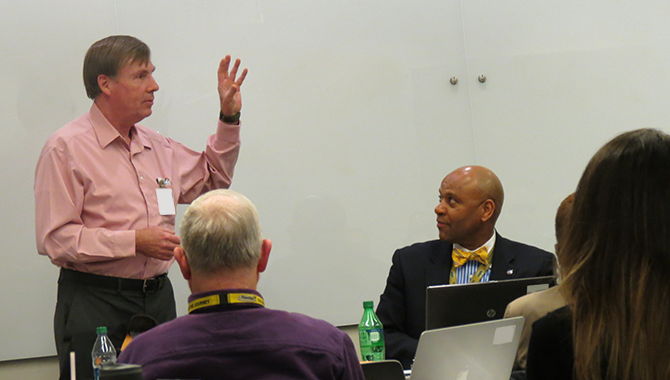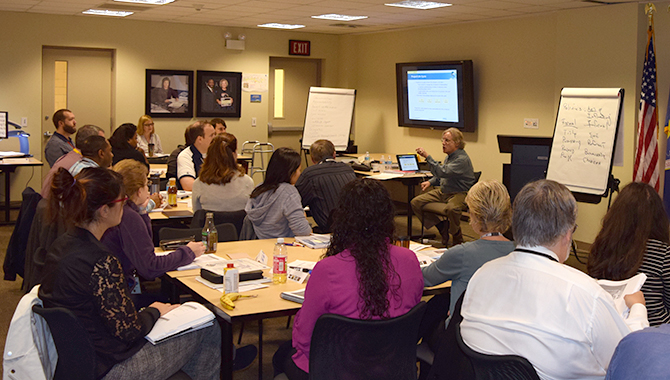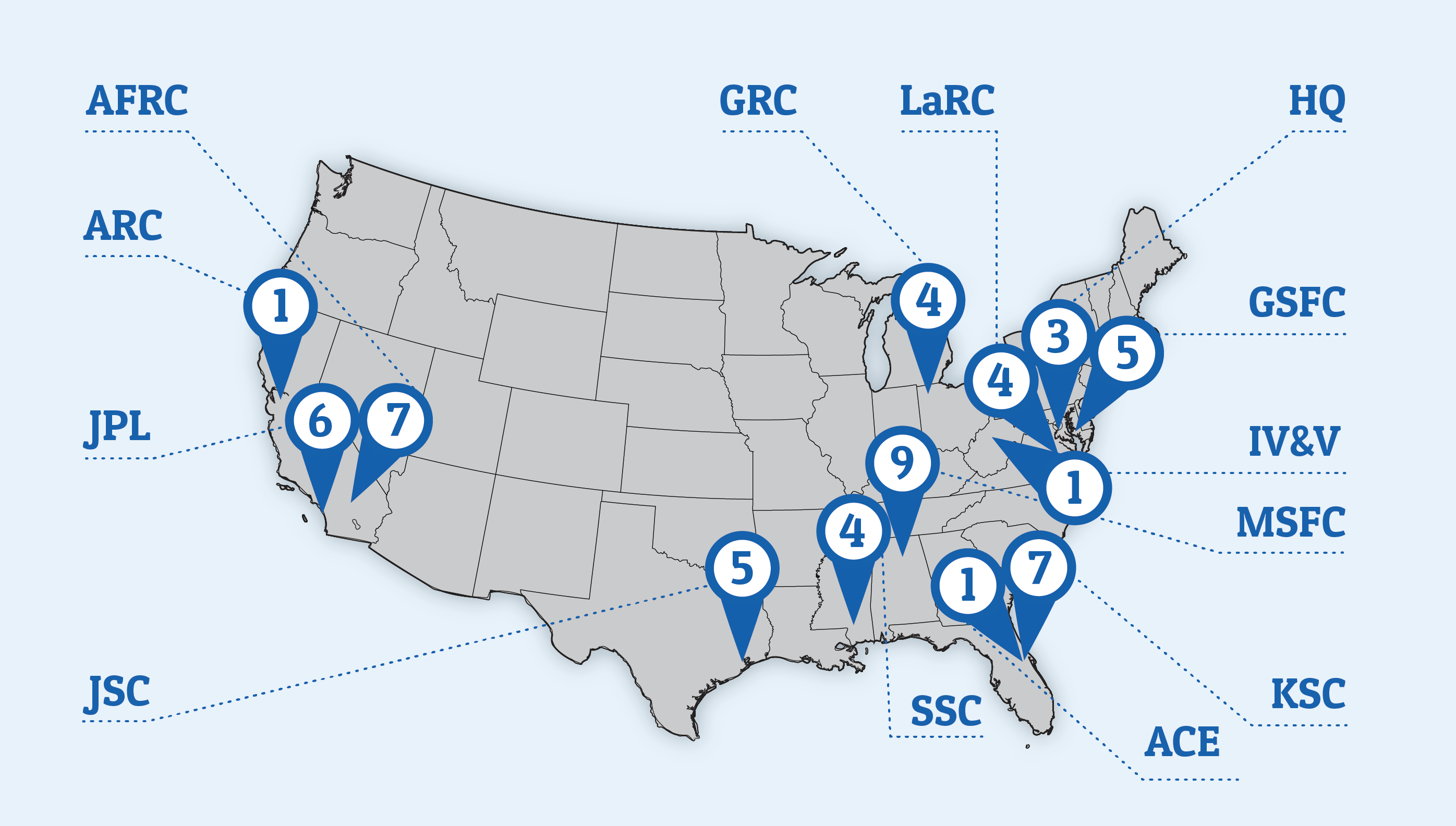
James Van Laak talks with Training Specialist Travis Millner and participants in APPEL’s Foundations of Aerospace at NASA course about some of his experiences during his successful career at the agency.
Photo Credit: NASA APPEL/Donna Wilson
James Van Laak, former Operations Manager for the International Space Station (ISS), shared hard-earned wisdom with APPEL’s Foundations of Aerospace course participants.
“Jim has had a career that spans the gamut of bringing a program from concept development to reality,” said Travis Millner, Training Specialist at Langley Research Center (LaRC), as he introduced Van Laak to participants in Foundations of Aerospace at NASA on March 16, 2015. Millner went on to say, “His career encompassed technology development, systems engineering, hardware development, program management, flight testing, and operations for many different NASA missions.”
Van Laak’s career began in the Air Force, where he flew fighter planes for seven years during the Cold War. From there, he became a contractor at the Defense Advanced Research Projects Agency (DARPA) before joining NASA’s Office of Safety and Mission Assurance at NASA Headquarters. Three years later he headed down to the Mission Operations Directorate at Johnson Space Center (JSC). “There I developed a reputation for solving problems and was appointed one of the original seven managers of ISS,” said Van Laak. That led to a long career of working with the ISS, which included his service as Manager of Operations, a role that he described as “the most exciting, interesting, fascinating job I’ve ever had.”
“There’s one very important message I would offer about how to think about your career,” he told the APPEL course audience. “What I brought to the table—the reason that I think people found me somewhat useful—was the fact that I tried to track from one end of the program to the other: the entire lifecycle, from concept development to project realization. I was one of the original guys to put together the ISS architecture and program plan, and I was the only one of those senior leaders who was still there when we were flying.” Also, he added, “If you get good at what you do, people call you up and say, ‘Hey, I’ve got a problem. Can you help?’ What I’m good at is figuring out how all the pieces fit together.”
His ability to see the big picture and solve problems stemmed from a number of career experiences, including a willingness to ask questions and seek out opportunities to learn from the best.
“I’ve had the good fortune to get to know a lot of fantastic people. Some of those were in the line of my direct job. Others I had to seek out.” He encouraged course participants to do the same. “I found out that people were often open to meeting with me. If I asked if I could pick their brains to understand how they accomplished what they did, they would spend time talking with me.”
The point of learning as much as he could was to do the best job he could do. “The number one currency in human spaceflight…is reliability,” he explained. “You’re committing a multi-billion dollar spacecraft, you’re committing human lives—you need to have confidence that things are going to execute like they’re supposed to execute.” Asking questions and having the data to support conclusions are critical for developing the needed confidence.
“The engineering team is represented through a thing call the mission evaluation room: the MER. You may have heard of the MER; it has a famous sign over the door that says, ‘In God we trust. Everybody else bring data.’ If you come in with a problem, they don’t want you to say, ‘I don’t like that.’ They want you to say: ‘I have a problem with that and here’s why.’”
Ultimately, Van Laak said, listening may be one of the most powerful tools for success at NASA. “When you listen to people, when you give them the opportunity to truly explain why they did what they did and how they got where they were, you gain powerful insights and you learn how to connect with people better.”
“I don’t know if I have any particular words of wisdom to offer,” he concluded, “except that I listen very, very well and I give people the benefit of the doubt. And I try very hard to learn from things that didn’t work in the past.”
Over the course of his tenure at NASA, Van Laak was involved with the Space Shuttle Program, Space Station Freedom, the ISS, and the Shuttle-Mir Program before becoming Director of the Systems Management Office at LaRC. In total, he oversaw 22 shuttle missions, 12 Russian missions, 36 NASA extravehicular activities (EVAs), 9 Russian EVAs, and chaired over 300 mission management team meetings.
***
Read an interview with Van Laak, from NASA’s History Office, about his experience as Deputy Program Manager of the Shuttle-Mir Program.
Learn more about the APPEL course Foundations of Aerospace at NASA.









